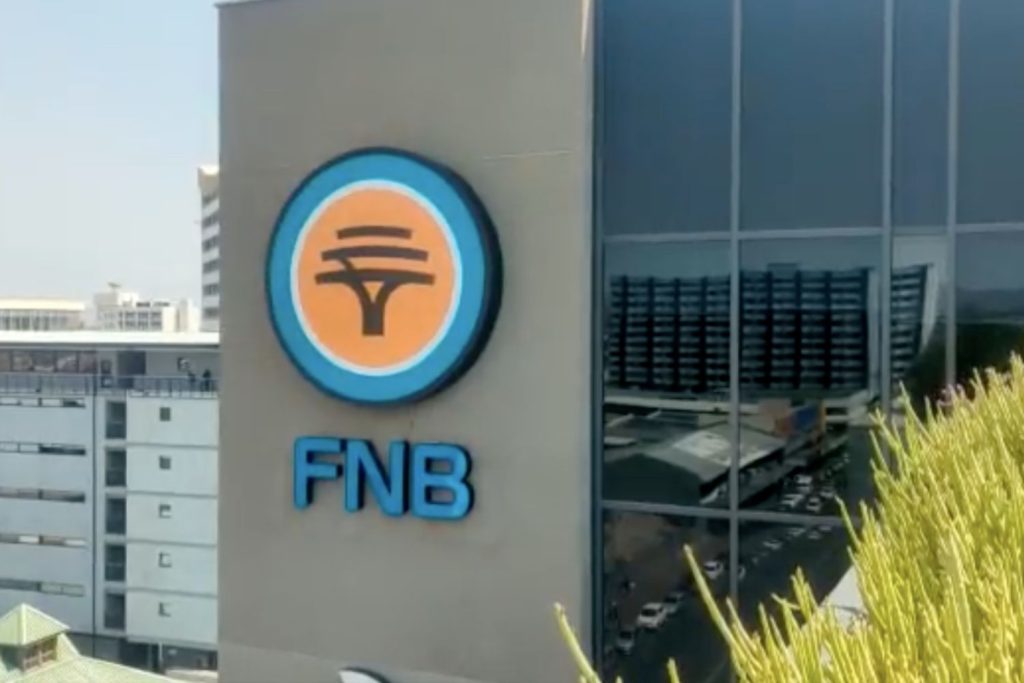You can also listen to this podcast on iono.fm here.
ADVERTISEMENT
CONTINUE READING BELOW
JPMorgan is set to release its results on 15 July.
The market will be paying a lot of attention to those numbers and especially the comments that will be made about the state of the US economy – not least because CEO Jamie Dimon is considered to be the most influential voice in the financial services industry, certainly in America and quite possibly in the world.
As a precursor to that release, comments made by Dimon in the past week in Ireland are particularly interesting.
For example, one of his comments that set tongues wagging was in relation to interest rates, with a statement that the markets were “underestimating” the possibility of US interest rates moving higher.
He’s right – practically nobody is talking about this, with the prevailing narrative being focused on debates around the timing of cuts, not rate increases.
Import tariffs and potential inflationary effects are the focus here, with the Federal Reserve voting unanimously to leave rates unchanged at their last meeting.
Read: Fed’s Daly sees two cuts in 2025 [Jul 2025]
President [Donald] Trump may hate that response to his approach to tariffs, but markets don’t tend to care too much about the feelings of politicians – and especially not the bond markets, which already fired a serious warning shot at Trump earlier this year when the big noise around tariffs really started.
Trump’s administration would love to see a drop in rates, leading to pressure being put on [Fed chair] Jerome Powell and calls for his resignation because those cuts just aren’t happening.
Read:
You can say what you want about South Africa, but at least our Reserve Bank remains a strong and independent institution that politicians do know better than to mess with.
The very last thing Trump would want to see is an increase in rates, creating a dangerous situation for consumer spending in the US with a combination of higher prices due to tariffs and reduced affordability based on interest rates.
Dealing with inflation is painful and Americans aren’t accustomed to economic pain in the same way that we are.
It’s not just the tariffs that are inflationary – there are also factors like tightening US immigration policy and the widening US budget deficit, leading to the very public falling out between Trump and Elon Musk.
And despite all of this, we have the S&P 500 at all-time highs!
If Jamie Dimon had anything other than grey hair, this would be giving him more grey hairs. Perhaps his eyebrows are now in serious danger of getting a silvery tint …
The market isn’t blind to these risks in the US. The rally in the S&P 500 is helped along by factors like dollar weakness, rather than just sentiment towards the US economy.
But still, it feels as though a perceived lack of alternatives in global markets may be leading to an unsustainable rally in the US market. These things rarely end well, hence the warnings by Dimon.
But what is the alternative among developed markets?
The market wants Europe to be the alternative
For investors who don’t want to take emerging markets risk, the only meaningful option outside of the US is Europe. The latest comments made by Dimon were at an event in Dublin, Ireland, so it seems like a fitting opportunity to talk about growth in Europe – or lack thereof, sadly.
In true American fashion, Dimon didn’t mince his words.
“You’re losing,” is what he said to the European officials and people of influence in the audience, praising Ireland for its open economy and suggesting that the rest of Europe could learn a thing or two from Ireland. I don’t think he was talking about golf and music, either.
Europe is as famous for its bureaucratic culture and lack of innovation as its historical buildings and wonderful food.
The tourism industry is probably the best thing about the region right now – so much so that I’m seeing increasing anger from residents towards the sheer volumes of tourists in their cities.
But when you consider that the Euro Stoxx 50 index has only just made it back to the levels seen before the dot-com crash in 2000, while the S&P 500 is over four times higher than those levels, it would perhaps be wise for the Europeans to make significant progress in their economies before chasing the tourists away.
That long-term context is important, as the recent performance of the European market suggests much enthusiasm around the region.
If you wanted to buy a related index tracker on the JSE, you would have to look at the Sygnia Itrix Euro Stoxx 50 ETF as the only locally listed ETF that tracks that index.
On a year-to-date basis, you would be up 21.5% in that ETF [exchange-traded fund].
And if you bought a comparable Sygnia S&P 500 ETF – or any S&P tracker really – you would only be flat in rand year-to-date. If you look over 12 months, the Euro Stoxx ETF would’ve returned 15.5% and the S&P 500 ETF would be good for 10.5%.
ADVERTISEMENT:
CONTINUE READING BELOW
This just shows you how recent the positive swing in momentum towards Europe actually is, as the gap over a 12-month basis is much smaller than year to date.
But which companies do you get?
Those who are used to seeing the Magnificent Seven in their ETF holdings would have to recalibrate their brains before looking at the fact sheet for the Sygnia Itrix Euro Stoxx 50 ETF.
You’re going to see some unexpected and old school names in there, like Siemens and Deutsche Telekom.
As a throwback to the 2000s when oil names were top of the pops, you would also have TotalEnergies in your top 10 holdings, as well as Air Liquide in the industrial space.
The two biggest holdings are tech names though, being SAP and ASML.
The former is best known to South African investors as the software that always seems to be part of chaotic implementations at local retailers, with Spar as an excellent example. Ernie Els fans will also recognise the logo straight away.
The latter is a name you might not know, but tech enthusiasts will be happy to learn that ASML is beyond critical in the AI industry as they are producing the machinery that gets used to manufacture chips.
And ASML is essential to Nvidia, in case you were wondering.
To round out the top 10, you’ll also find Allianz, Schneider Electric, luxury market stalwart LVMH and financial services group Banco Santander, which is a name you might recognise from Formula 1.
Only 15.8% of the ETF’s exposure sits in the IT sector, whereas an S&P 500 ETF would have 31.5% exposure to that sector.
It shows you how much bigger IT is in America versus Europe, which is the innovation point that so many people are talking about.
Read: Supermarket billionaire wants to build AI gigafactory in Europe
The biggest sector in the European ETF is financials at 24.2%. Again, that’s different to what you’ll see in the US market, where the financials sector is 14.3% – or less than half the size of IT.
Now, your gut feel might be that the US index is more concentrated around the largest names, so you may be surprised to find that this is an incorrect assumption.
The top 10 holdings in the S&P 500 ETF contribute a total of 35.6% of exposure, whereas the top 10 holdings in the Euro Stoxx 50 ETF are good for 40.3%.
The clue is in the name: the European index has 50 holdings, while the US index has 500.
Put differently, 59.7% of exposure in the European index – i.e. everything outside of the top 10 – is split across 40 names, while 64.6% of exposure in the S&P 500 index is split across 490 names.
Food for thought around diversification risk.
If nothing else, Europe is on the map now
A year ago, or perhaps even coming into this year, you would’ve struggled to find too many people willing to bet on Europe ahead of the US.
It’s very important to remember that much of the recent performance differential is thanks to the relative valuations, with European stocks trading at a vast discount to the US names. The question is whether that discount can continue to close.
The other question is whether that closure would come from an uptick in European numbers or pressure in US stocks.
Either way the gap would close, but you only make money with long positions from the gap closing through Europe catching up rather than the US falling off.
As we had into US banking earnings season, the market is collectively holding its breath. You can expect to see sharp responses to any negative surprises, including in the outlook statements by banking execs – and especially the likes of Jamie Dimon.
It’s going to be a very interesting week in US markets.
Follow Moneyweb’s in-depth finance and business news on WhatsApp here.

 20 hours ago
1
20 hours ago
1
![[FULL SHOW] SA prepares for G20, questioning Prasa’s R7.5bn spend, and the impact of tariffs on SA’s auto sector](https://www.moneyweb.co.za/wp-content/uploads/2023/11/JimmyMoyaha-safm.jpg)





















 English (US) ·
English (US) ·